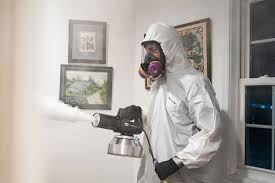
Decomposition odors are among the most challenging and distressing smells to handle. Whether caused by deceased animals, food waste, or organic material decay, these odors can linger for long periods, affecting your living or working environment. Proper decomposition odor removal is essential not only for comfort but also for health, as prolonged exposure to these odors can indicate bacterial growth or mold presence.
Understanding Decomposition Odors
Decomposition odors are caused by the breakdown of organic matter by bacteria and other microorganisms. The process releases gases such as hydrogen sulfide, ammonia, and various volatile organic compounds (VOCs), which produce the characteristic foul smell.
Key sources of decomposition odors include:
- Animal carcasses – pets, rodents, or wildlife that may die in hidden spaces.
- Food waste – especially meat, dairy, and other protein-rich foods.
- Human remains – in tragic situations, professional intervention is required.
- Organic material in plumbing or hidden areas – mold, damp areas, or blocked drains.
Understanding the source is the first step toward effective odor removal.
Effective Decomposition Odor Removal Methods
1. Identify and Remove the Source
The most crucial step in odor removal is locating the origin of the smell. Hidden areas like under furniture, inside walls, or behind appliances are common culprits. Once identified:
- Remove the decomposed material safely.
- Use gloves and protective gear to prevent exposure to harmful bacteria.
- Dispose of the material according to local regulations.
2. Clean the Affected Area Thoroughly
After removal, clean the area with specialized cleaners that break down organic residues:
- Enzymatic cleaners: These break down proteins, fats, and other organic compounds effectively.
- Disinfectants: Kill bacteria and prevent further decomposition.
- Steam cleaning: For fabrics, carpets, and upholstery to penetrate deeply and sanitize.
3. Neutralize Odors
Simply cleaning may not completely remove odors. Neutralization techniques include:
- Activated charcoal: Absorbs lingering odors from air and surfaces.
- Ozone treatment: Destroys odor-causing molecules but requires professional handling.
- Vinegar or baking soda: Natural solutions for mild decomposition odors.
4. Improve Ventilation
Enhancing airflow helps dissipate odor molecules:
- Open windows and doors to create cross-ventilation.
- Use fans to direct airflow out of the area.
- Consider air purifiers with HEPA filters to remove particles and VOCs.
5. Seek Professional Help When Necessary
Some decomposition odors, especially from large-scale sources or human remains, require professional cleaning services. Certified biohazard cleaners use advanced methods such as:
- Fogging and deep cleaning
- Professional-grade enzymatic treatments
- Ozone generators and air scrubbers
Prevention Tips for Decomposition Odors
- Store food in sealed containers and dispose of waste promptly.
- Regularly clean pet areas and monitor for deceased animals.
- Inspect plumbing and hidden areas for leaks or mold.
- Use air purifiers and maintain ventilation to reduce odor buildup.
Conclusion
Decomposition odor removal is a delicate task that requires understanding the source, proper cleaning, and effective odor neutralization. While small cases can often be managed with household solutions, severe odors—especially from large-scale organic decay or biohazards—require professional attention. Maintaining cleanliness, proper waste disposal, and ventilation are key steps to prevent future odors and ensure a healthy, odor-free environment.


